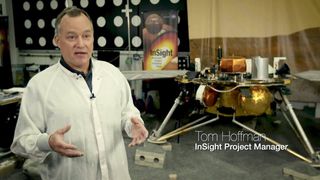NASA plans to send a small, unmanned helicopter to Mars that could boost our understanding of the Red Planet.
It is part of the US space agency's 2020 mission to place a next-generation rover on the Martian surface and will mark the first time such an aircraft will be used on another planet.
Known as the Mars Helicopter, the remote-controlled device weighs less than four pounds (1.8kg) and its blades spin at almost 3,000rpm, roughly 10 times the rate employed by helicopters on Earth.
NASA officials said the aircraft will reach the Red Planet's surface attached to the Mars 2020 rover that aims to carry out geological studies and ascertain the habitability of the Martian environment.
"NASA has a proud history of firsts," said NASA administrator Jim Bridenstine.
"The idea of a helicopter flying the skies of another planet is thrilling."
Controllers on Earth will command the Mars Helicopter, which is designed to receive and interpret commands from the ground.
Plans are being laid for a 30-day flight test, with five flights going incrementally further each time.
"The altitude record for a helicopter flying here on Earth is about 40,000 feet (12,100 meters)," said Mimi Aung, Mars Helicopter project manager at NASA's Jet Propulsion Laboratory.
"The atmosphere of Mars is only one percent that of Earth, so when our helicopter is on the Martian surface, it's already at the Earth equivalent of 100,000 feet up (30,500 meters)," she added.
NASA says that if successful, the Mars Helicopter could be a model for scouting on future Mars missions, able to access places the human-built rovers cannot reach. If it fails, it will not impact the Mars 2020 mission.
More from NASA
 2:26
2:26"The ability to see clearly what lies beyond the next hill is crucial for future explorers," said NASA's Thomas Zurbuchen, associate administrator for the science mission directorate.
"We already have great views of Mars from the surface as well as from orbit. With the added dimension of a bird's-eye view from a 'marscopter', we can only imagine what future missions will achieve."
[contf] [contfnew] 
Sky News
[contfnewc] [contfnewc]







